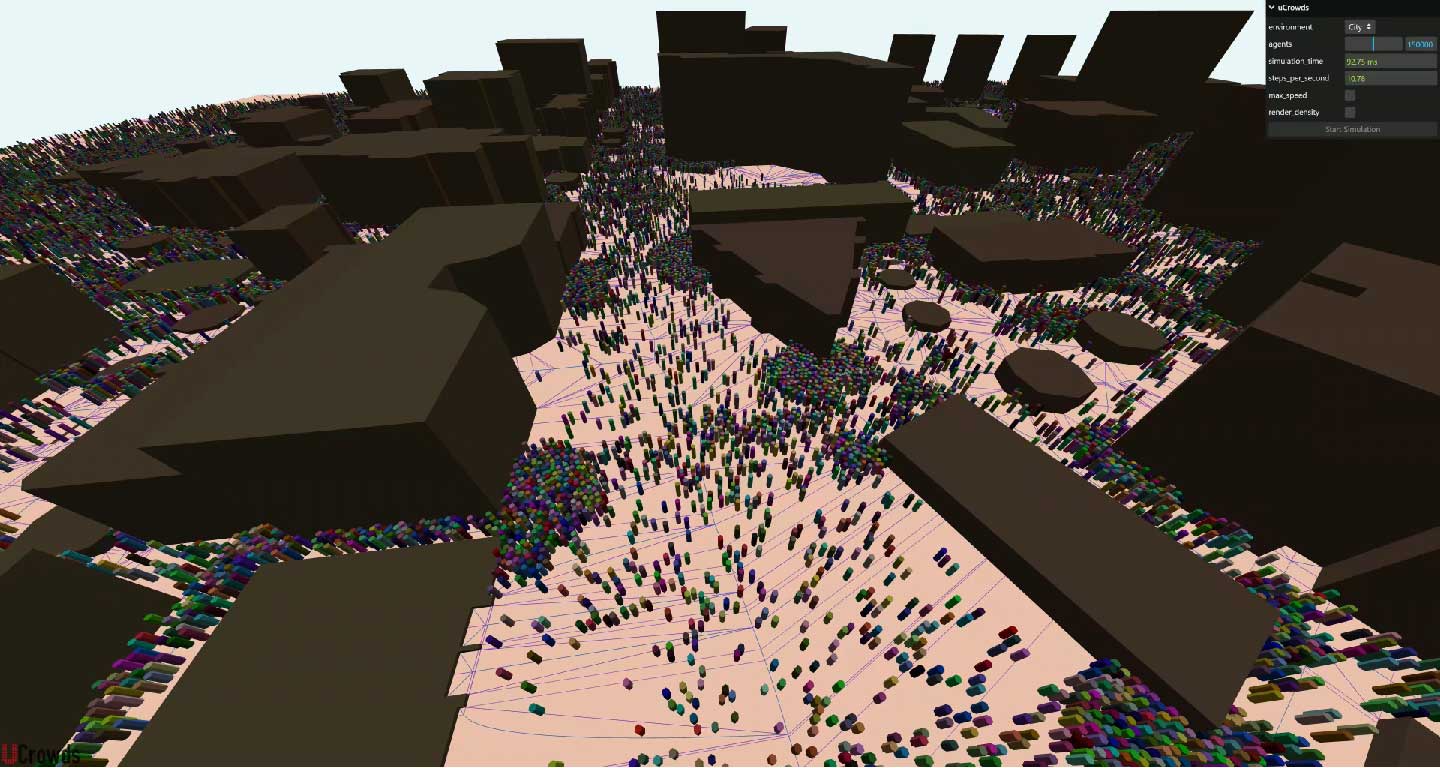
Real-time crowd simulation of 150000 pedestrians in a browser
Our 2023 roadmap preview reveals our crowd simulation library that runs 150,000 real-time pedestrians in a web browser.
The technology facilitates the next generation of digital twins, synthetic single environments, and the Metaverse.
These virtual environments have many use cases.
They can be used to analyze and optimize the performance of various city systems. For example, a digital twin of a city’s transportation system could be used to optimize traffic flow and reduce congestion, or to identify potential bottlenecks in the system.
They can also be used to design and test new urban projects, such as new buildings, infrastructure, or public spaces. Other uses include training, simulation, and visualization, e.g. to train city planners on new development plans, or to simulate the effects of changes to the city’s infrastructure. A visualization and interaction can make it easier to understand and analyze them.
Their implementations on the web are often static, i.e. they present a virtual representation of a 3D geographical (GIS) environment, in which several layers of static information is visualized. Our library makes it dynamic by adding customizable and interactive crowds to the environment, which are simulated and visualized in real-time.
The library provides a JavaScript interface wrapped around a Web Assembly module that was compiled from our 100% Rust code base. I’m proud of my team who managed to support a multi-threaded simulation by using multiple web workers, allowing a real-time simulation on a consumer PC with 8 cores visualized in 4K at 60Hz.
What usage of this technology do you see?
#crowd #simulation #web #digitaltwin #sse #metaverse #wasm #webassembly #rust
Read, like and share this post on our LinkedIn!